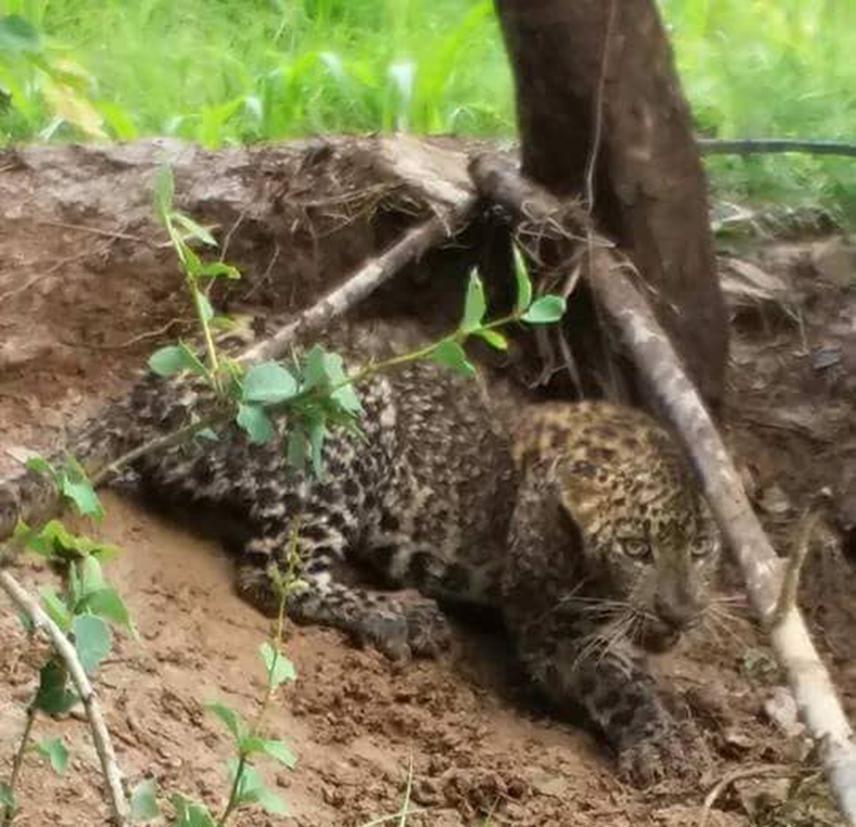Dhirendra Bahadur Chand
Far-western Nepal is far behind the rest of country in economic development, education and human development index. Tallo Sorad area of Baitadi has high human-leopard conflicts with dozens of human deaths every year. The management actions from the government agencies in Baitadi are very limited, just restricted to compensation to the victims and attempts to kill or translocate the leopards, which are not the sustainable way for minimizing the conflicts. Using ecological and social data, this project aims to identify the causes of conflicts, the spatial and temporal pattern of leopard attacks on human and livestock, and potential solutions. This project also intends to raise the awareness among the people focusing on the most affected age (below 15 years) and sex (females) groups of leopard attacks.

Leopard on trap.
Tallo Sorad area of Baitadi district in far-western Nepal is far behind the rest parts of the country in economic development, education and human development index. In addition to the socioeconomic problems, it also has long history of extreme human-leopard (Panthera pardus) conflicts, resulting dozens of deaths every year. The actions of government agencies are limited on compensation to the victims and attempts to kill or translocate the leopards, which are not the sustainable way, as they only transfer the problem temporarily. The retaliatory killing has threatened the survival of this ‘Vulnerable’ carnivore and on the other hand, the loss of human life is irreparable. Scientific approaches are essential against the lethal control techniques for the long-term carnivore management that demand good ecological data about the carnivore, its prey species and habitat, and socioeconomic details of the area.
This project will identify the level of conflicts between the leopard and human in Tallo Sorad area of Baitadi, their causes and potential remedies by using the ecological as well as socioeconomic data. Automatic infrared sensor cameras will be installed in the community forests to identify the population of leopard, prey abundance, general behavior of leopard and its movement pattern. The survey in two seasons (winter and autumn) will provide the data for evaluating temporal variation in leopard and prey abundance. Ecological niche modeling will be done using the fine scale geographical data recorded from the infrared cameras as the occurrence points of leopard; and topographic factors, bioclimatic variables and land use data as the environmental variables. Further, awareness raising programs will be conducted among the local people about the ecology and behavior of wildlife, especially the leopard. Awareness programs will include community meetings, extra-curricular activities among the school children and radio programs.
The findings of this project will be valuable in sustainable management of the leopard in Tallo Sorad area. Identification of the highly prone areas and populations to leopard attacks can provide valuable baseline information to prevent human casualties from leopard. The conservation awareness to the school students will have its long-term impact in conservation and management efforts.